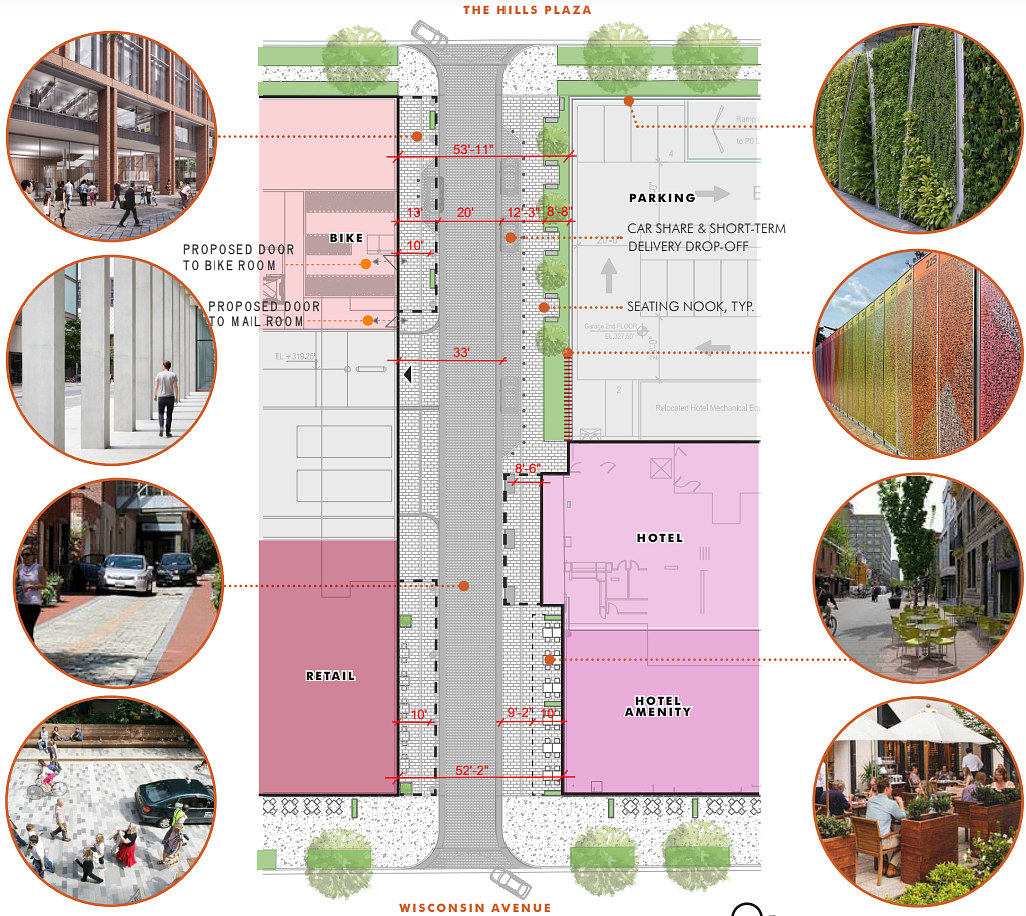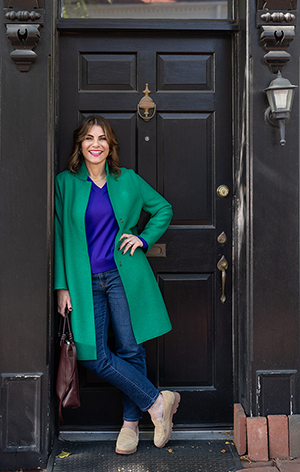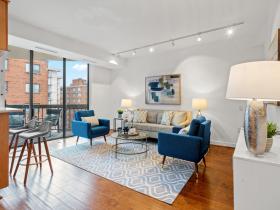 Why the Woonerf? Demystifying the Popularity of the Curbless Street Amenity
Why the Woonerf? Demystifying the Popularity of the Curbless Street Amenity
✉️ Want to forward this article? Click here.

For the past few years, it seems like there's constantly a development or three in the DC-area pipeline that includes a "woonerf", or a curbless, multi-modal street meant to encourage pedestrian activity.
Woonerf is a Dutch term that translates to "living street", and the concept was so-named in the early 1960s as planners began formally implementing "woonerf zones" in Europe. While the amenity is extremely prevalent in the Netherlands, it started to gain popularity worldwide within the past decade.
Locally, JBG Smith recently delivered two: one as part of the last phase of Atlantic Plumbing in Shaw, and another at Quincy Lane in Eckington; the company is also working on a third in Crystal City. The Federal Realty Investment Trust is proposing to include one as part of an update to the Villages at Shirlington, the Cafritz Foundation is proposing one as part of the next phase of Art Place in Fort Totten, and even the highway deckover projects proposed along North Capitol Street and Connecticut Avenue reference the style.
So why the woonerf? UrbanTurf asked some developers why this amenity is popping up everywhere.
story continues below
loading...story continues above

Jad Donohoe of the Donohoe Companies, whose recently-proposed development at 5500 Wisconsin Avenue is expected to include a woonerf, cites Cady's Alley in Georgetown as an early local example of the success of the amenity and a frequent reference point for developers. "Woonerfs are just one part of a bigger, broader desire to have interesting streets and interesting places," Donohoe explains.

Because these interesting corridors tend to serve multiple uses, including sometimes providing loading access, woonerfs can turn practical needs into less of a nuisance.
"If you go back and look at old developments, a lot of times you'll see the retail and the design all go onto the "A" frontage, and the "B" frontage gets all the service uses," Donohoe said. "But people still need that secondary street to walk around the neighborhood, and it's no fun to walk past a long row of loading docks and garage doors for multiple buildings. Nobody — not developers, planners, or neighbors — wants to "give up" on one side of a city block and have it turn it into a service alley, and woonerfs are one solution. [They] can handle the un-fun necessary requirements of a building, but still create an actual place."
Britt Snider, principal at Redbrick LMD, also cites the multifunctional nature of woonerfs as a reasoning for the amenity's inclusion as part of the proposed Bridge District development at Poplar Point in Anacostia.
"Woonerfs are an effective way of stitching together the major components of an active, mixed-use environment: the base of vertical structures, pedestrian walkways, transportation and retail storefronts/outdoor seating are all connected in a mostly curbless environment that breaks down barriers of where things were traditionally supposed to go."

The idea has even gained traction in more suburban areas, with a woonerf-style street being proposed as part of the Hillandale Gateway development in Silver Spring. Shane Pollin, principal at PS Ventures, notes that the amenity, dubbed "Festival Street", was actually suggested by a member of Montgomery County's planning staff.
"Immediately adjacent to this street will be both the entrance to our age restricted building and some of our most prominent retail space," Pollin notes. "The Festival Street is envisioned as a barrier-free and more pedestrian-friendly way to tie these important elements together."
Unlike typical woonerfs, the space can also be converted to be car-free depending on what's going on. "Placing removable bollards at each end of this space will afford us the ability to close the street to vehicles (other than perhaps food trucks) during special events," Pollin explained to UrbanTurf.
"A woonerf works because there's a push-pull between the different uses it's being put to — like any other urban street," says Donohoe. "Pedestrian-only streets can be great, but a good woonerf can have a busy vitality to it that feels very real."
See other articles related to: woonerf, woonerfs in dc
This article originally published at https://dc.urbanturf.com/articles/blog/why-the-woonerf-demystifying-the-popularity-of-the-curbless-street-amenity/18891.
Most Popular... This Week • Last 30 Days • Ever

With frigid weather hitting the region, these tips are important for homeowners to ke... read »

Today, UrbanTurf offers a brief explanation of what it means to lock in an interest r... read »

A new report from DC’s Office of Revenue Analysis highlights how millennials and wo... read »

An application extending approval of Friendship Center, a 310-unit development along ... read »

The 30,000 square-foot home along the Potomac River sold at auction on Thursday night... read »
DC Real Estate Guides
Short guides to navigating the DC-area real estate market
We've collected all our helpful guides for buying, selling and renting in and around Washington, DC in one place. Start browsing below!
First-Timer Primers
Intro guides for first-time home buyers
Unique Spaces
Awesome and unusual real estate from across the DC Metro














